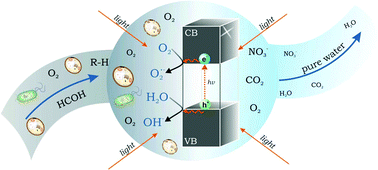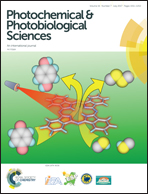Photosensitization of CuI – the role of visible light induced CuI → CuII transition in photocatalytic degradation of organic pollutants and inactivation of microorganisms
Abstract
Bare and photosensitized copper iodides were tested in photocatalysed degradation of an organic dye (Acid Red 1) and inactivation of fungi (Saccharomyces cerevisiae). CuI, with the band gap energy slightly lower than that of TiO2, appeared to be highly efficient in these processes. Sensitization of copper iodide was achieved by surface modification with [Cu(SCN)2(phen)2]. The photosensitization mechanism encompasses a metal to metal charge transfer, CuI → CuII. The applied photosensitizer binds to CuI through thiocyanate ligands resulting in the formation of an active CuII/CuI hybrid photocatalyst ([CuII(SCN)2(phen)2]@CuII). Its absorption edge is red shifted towards a lower energy when compared with bare CuI, resulting in enhanced visible light induced photocatalytic activity. The studied materials appeared to be photoactive in current generation, degradation of organic compounds and inactivation of fungi.



 Please wait while we load your content...
Please wait while we load your content...